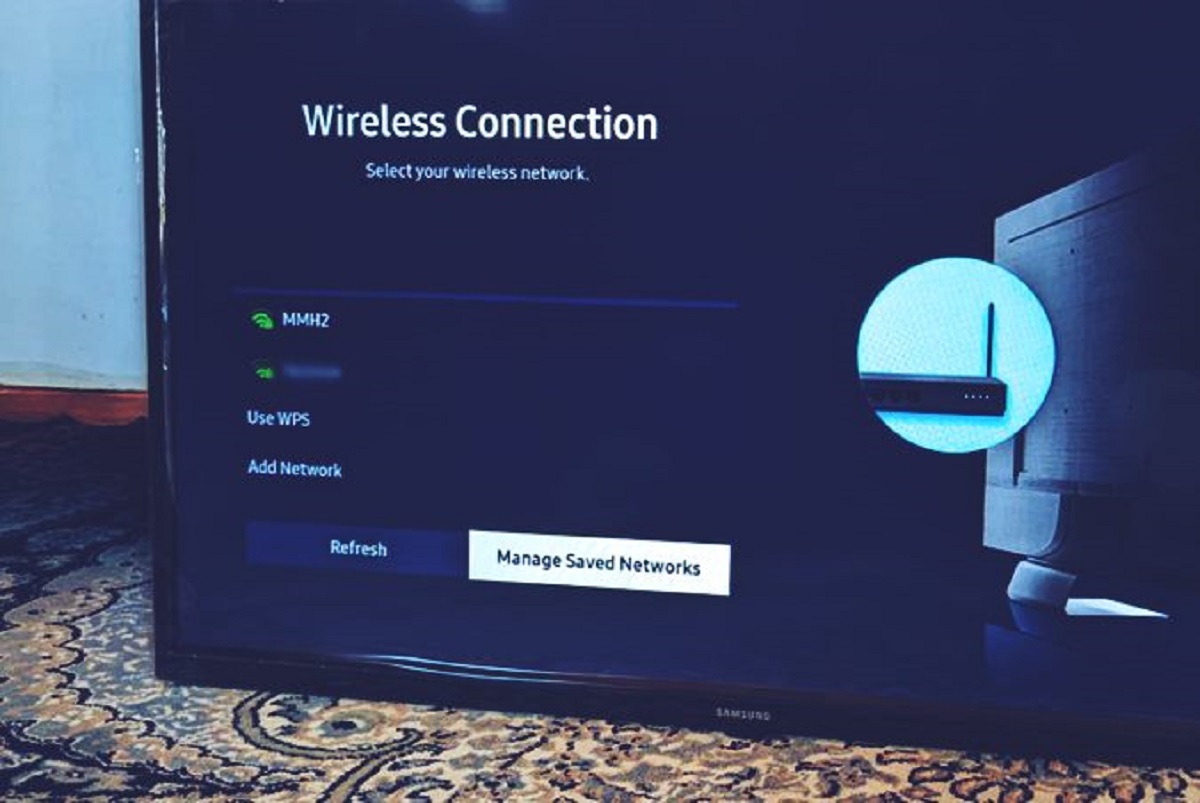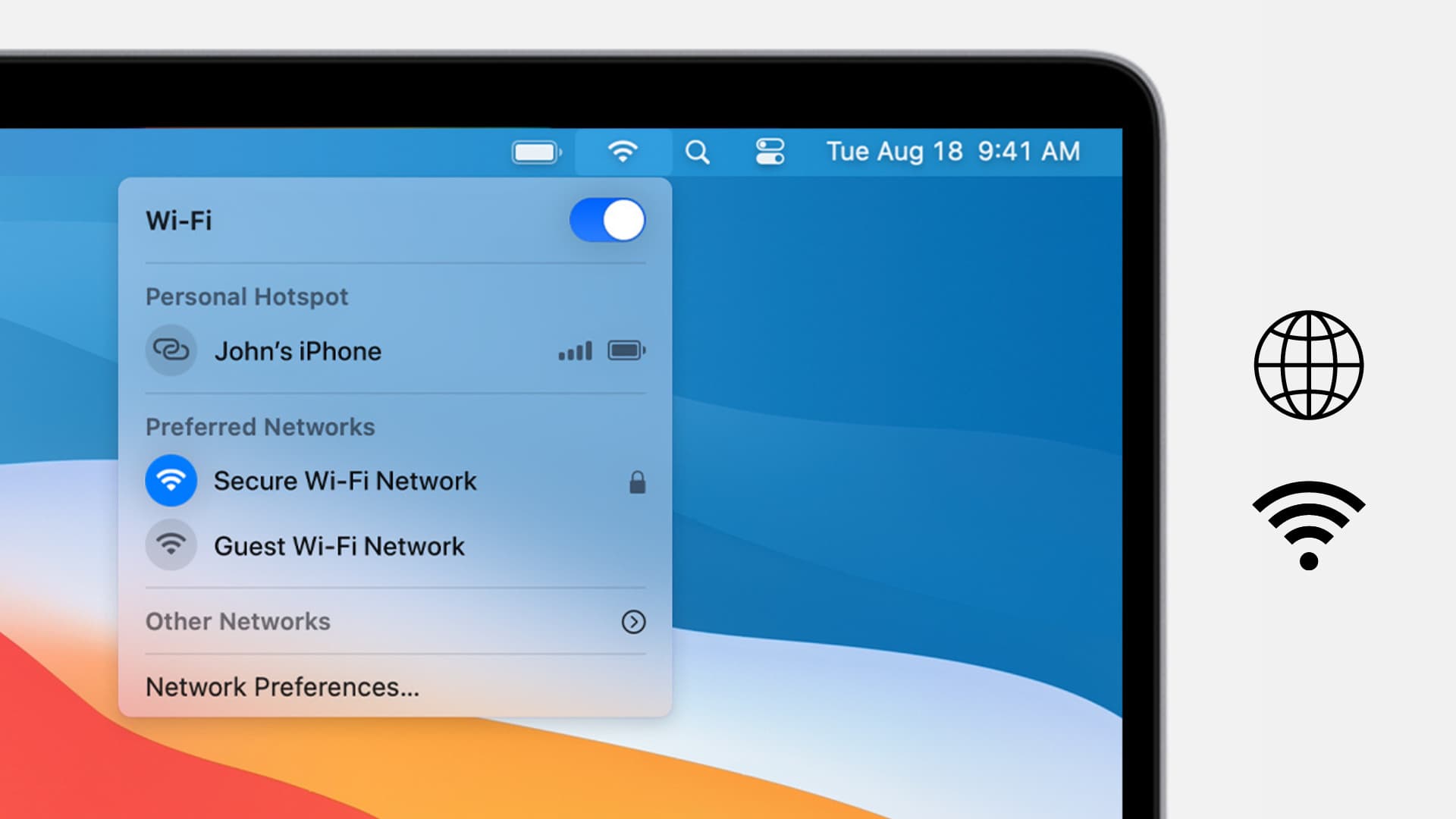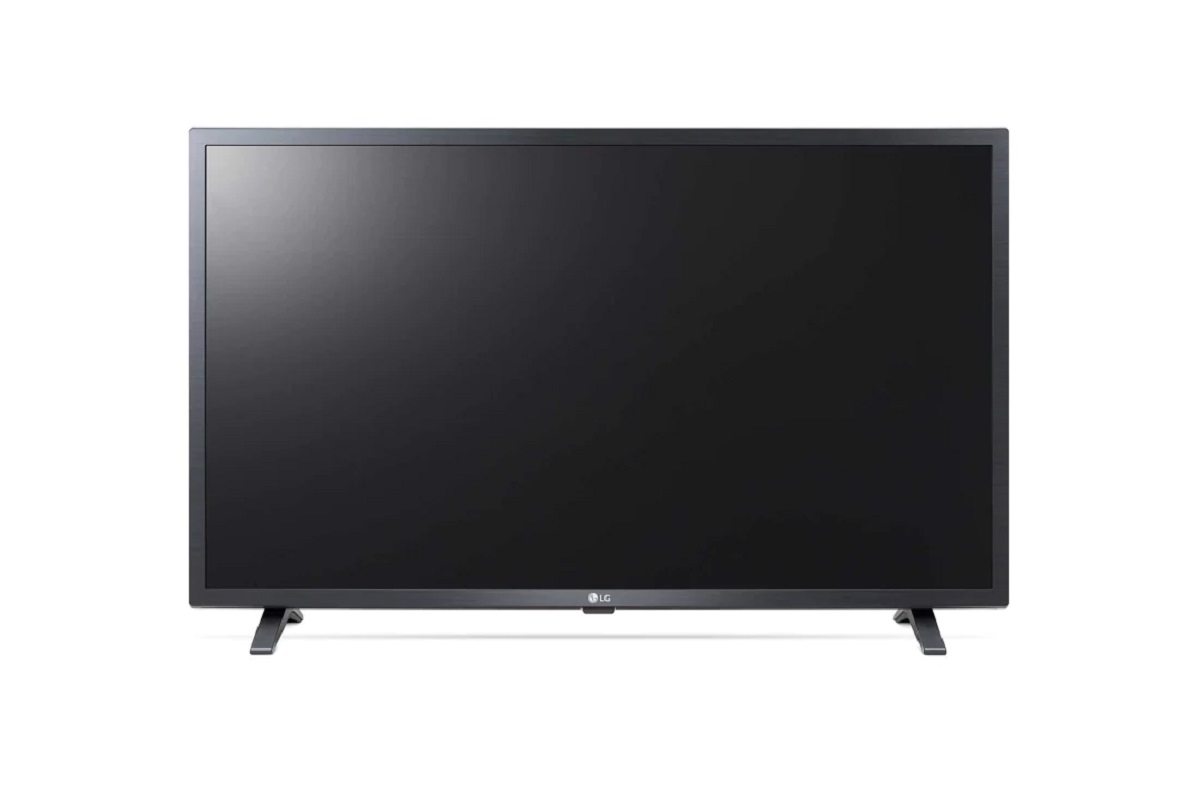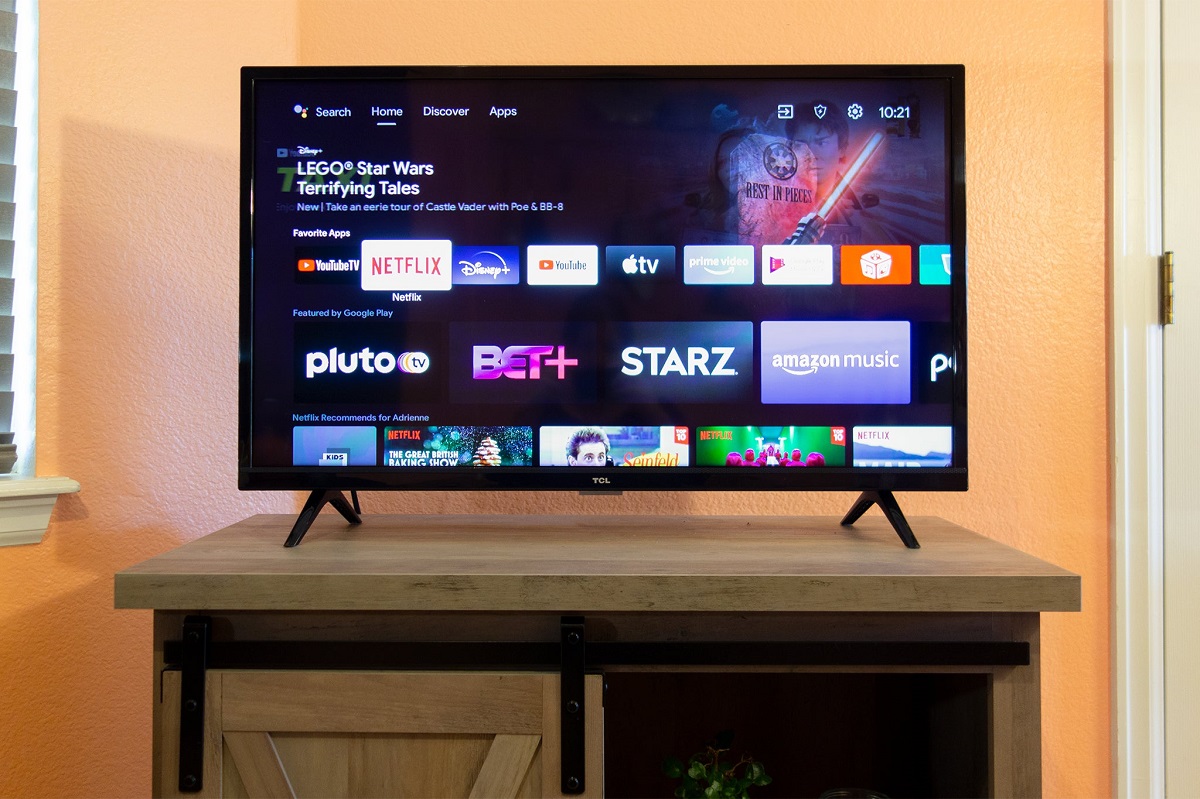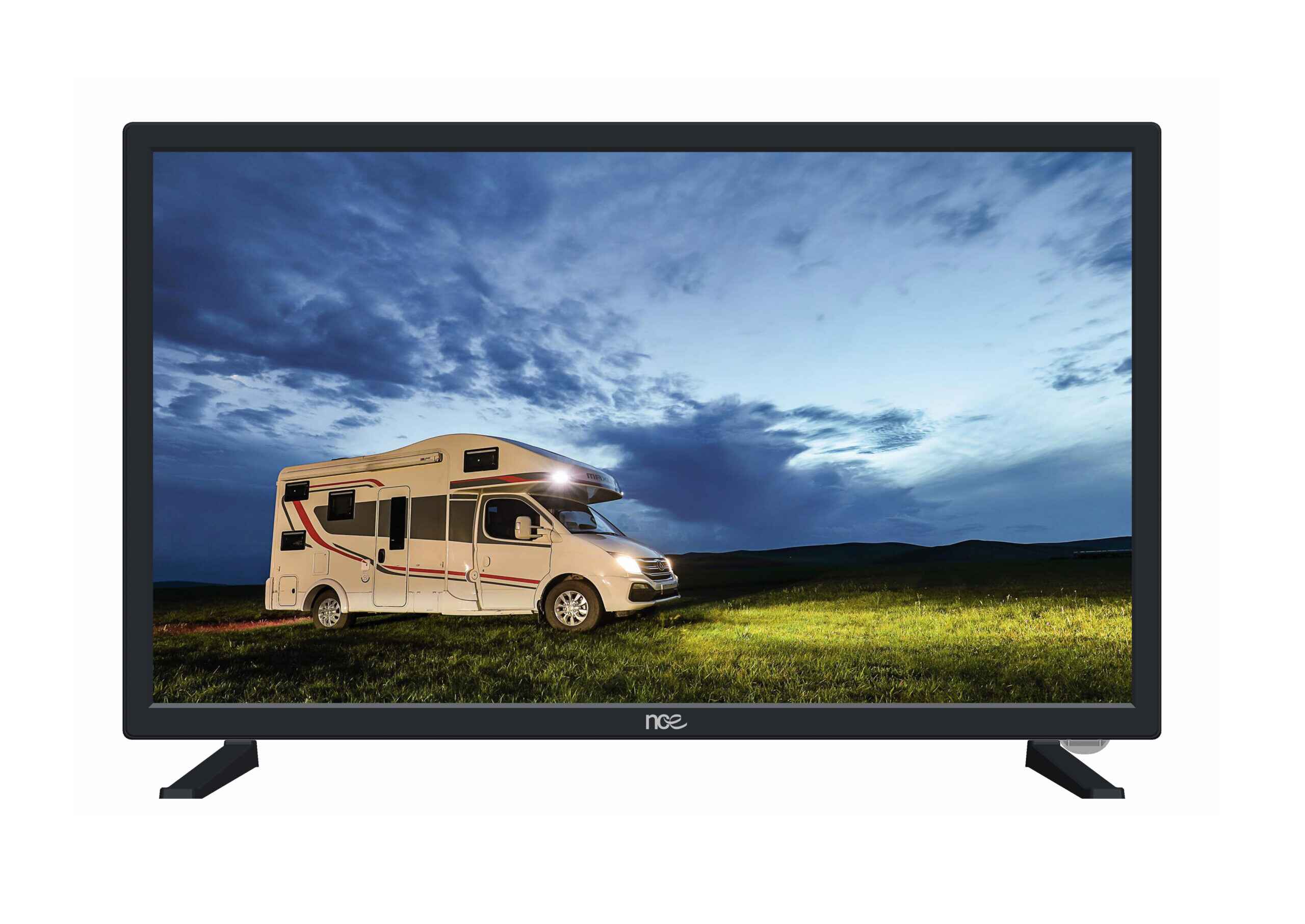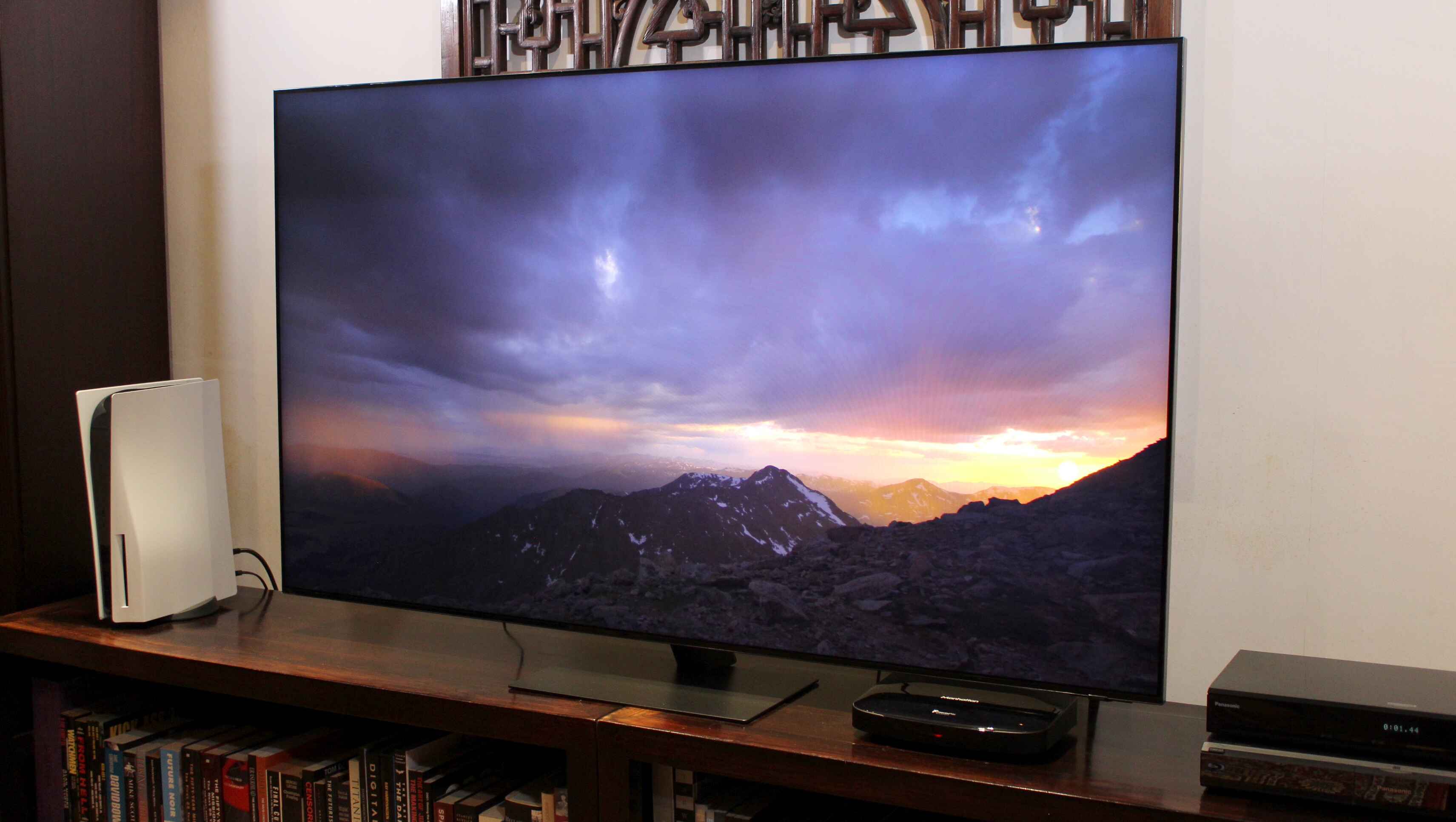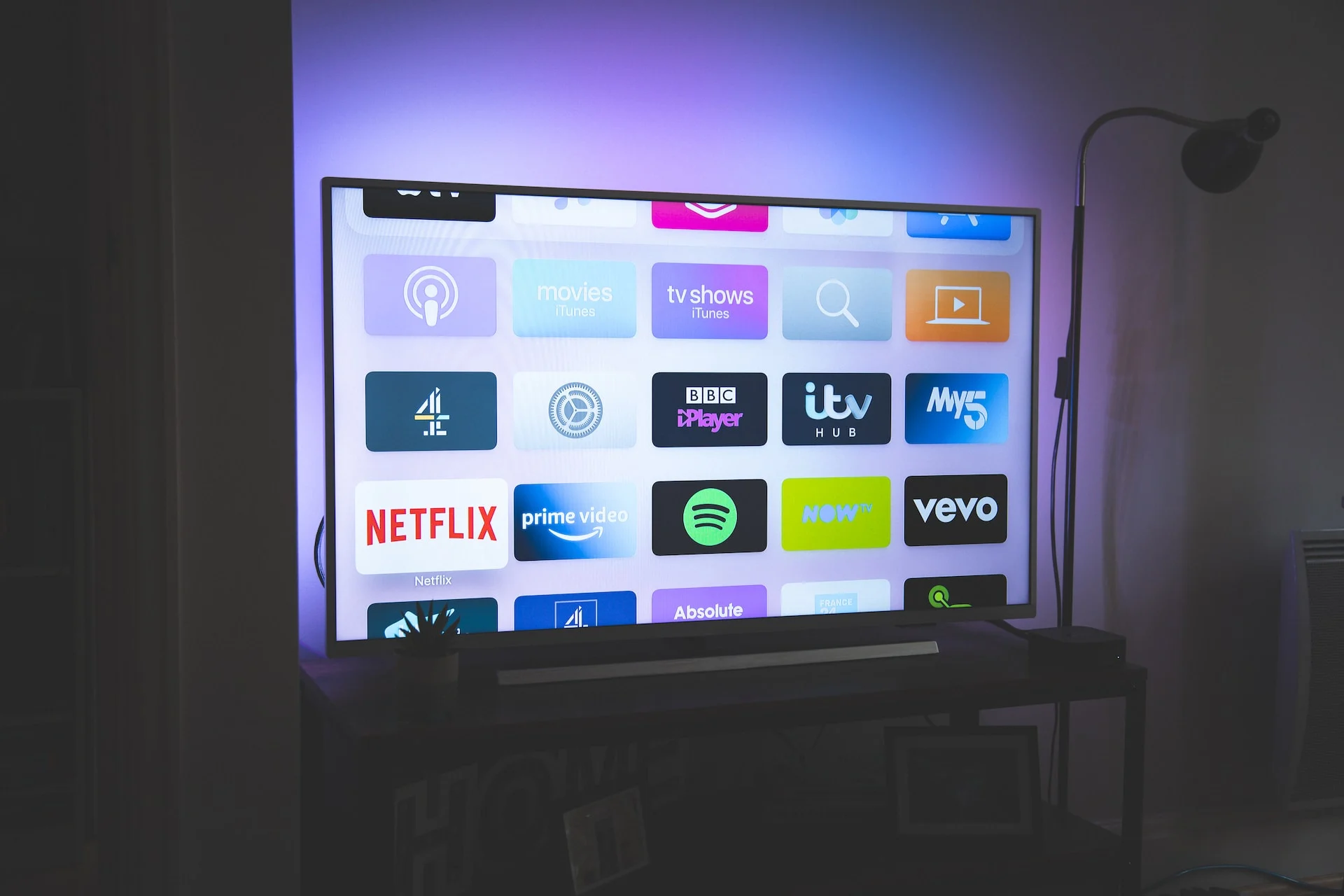Introduction
Having a Samsung TV that won’t connect to Wi-Fi can be frustrating, especially when you’re trying to stream your favorite shows or access online content. Whether you’re experiencing this issue for the first time or it’s been a recurring problem, understanding the potential causes and troubleshooting steps can help you resolve the problem quickly and get back to enjoying your TV’s online features.
A reliable Wi-Fi connection is essential for accessing smart features on your Samsung TV, such as streaming apps, firmware updates, and screen mirroring. While Samsung TVs are known for their advanced technology and seamless connectivity, there can be several reasons why your TV is having trouble connecting to Wi-Fi.
In this article, we’ll explore the common causes behind a Samsung TV’s Wi-Fi connection issues and provide troubleshooting steps to help you get your TV connected again. Whether it’s incorrect network settings, weak Wi-Fi signal, outdated firmware, network interference, or DNS issues, we’ll cover all the potential culprits and show you how to fix them.
By following the troubleshooting steps outlined in this article, you’ll be able to diagnose and resolve the Wi-Fi connection problem on your Samsung TV. Whether you’re a tech-savvy user or someone who is less familiar with networking, we’ve simplified the solutions so that everyone can effectively troubleshoot and fix the issue.
Now, let’s dive into the possible reasons why your Samsung TV is struggling to connect to Wi-Fi and the steps you can take to resolve this frustrating issue.
Reasons why your Samsung TV won’t connect to Wi-Fi
If you’re experiencing difficulties connecting your Samsung TV to Wi-Fi, there could be several reasons behind this issue. Understanding these reasons can help you pinpoint the problem and find an effective solution. Here are the most common causes of Wi-Fi connection problems on Samsung TVs:
- Incorrect network settings: One of the main reasons why your Samsung TV may not be connecting to Wi-Fi is due to incorrect network settings. This could include an incorrect Wi-Fi password, network name (SSID), or security settings. Double-check that you’ve entered the correct network credentials on your TV to ensure a successful connection.
- Weak Wi-Fi signal: If your Samsung TV is located far from your Wi-Fi router or there are physical obstructions such as walls or appliances blocking the signal, you may experience a weak Wi-Fi connection. This can cause intermittent or no connection at all. Making sure your TV is within a reasonable distance from your router or using a Wi-Fi range extender can help alleviate this issue.
- Outdated firmware: Outdated firmware on your Samsung TV can sometimes interfere with its ability to connect to Wi-Fi. Firmware updates often include fixes for various bugs and connectivity issues. Check if there are any available firmware updates for your TV model and install them to ensure optimal performance and compatibility with your Wi-Fi network.
- Network interference: Other electronic devices in your surroundings could potentially interfere with your Wi-Fi signal, causing connectivity problems for your Samsung TV. Devices like cordless phones, microwave ovens, and baby monitors emit signals on similar frequencies to Wi-Fi, leading to signal degradation or disruptions. Try moving these devices away from your TV or router to minimize interference.
- DNS issues: DNS (Domain Name System) translates domain names into IP addresses and helps your Samsung TV connect to websites and online services. If your DNS settings are misconfigured or experiencing problems, your TV may struggle to connect to the internet. Resetting the DNS settings on your TV or using alternative DNS servers like Google DNS or OpenDNS can resolve this issue.
Identifying the specific reason why your Samsung TV won’t connect to Wi-Fi is the first step towards resolving the issue. In the following section, we will provide you with effective troubleshooting steps to fix the Wi-Fi connection on your Samsung TV.
Incorrect network settings
One of the most common reasons why your Samsung TV is unable to connect to Wi-Fi is due to incorrect network settings. It’s crucial to ensure that you have entered the correct information to establish a successful connection. Here are some things to check:
- Wi-Fi password: Double-check that you have entered the correct password for your Wi-Fi network. It’s easy to make a typing mistake, so carefully enter the password again to eliminate any errors.
- Network name (SSID): Make sure you have selected the correct network name (SSID) from the list of available networks on your TV. If you have multiple Wi-Fi networks in your home, ensure that you choose the correct one for your Samsung TV.
- Security settings: Verify that the security settings (WEP, WPA, WPA2) are correctly configured on both your Wi-Fi router and your TV. Mismatched security settings may prevent a successful connection.
It’s worth noting that when you enter a wrong password or select the wrong network name, your Samsung TV may display an error message or fail to connect altogether. Take the time to carefully review and correct any incorrect network settings on your TV.
Additionally, if you recently changed your Wi-Fi network password or replaced your router, you will need to update the network settings on your Samsung TV accordingly.
To modify network settings on your Samsung TV, follow these steps:
- Go to the TV’s home screen and navigate to “Settings.”
- Select “Network” and then choose “Network Settings.”
- From the list of available networks, select your Wi-Fi network.
- Enter the correct password (if required) and confirm the network settings.
- Once the settings are saved, your TV will attempt to connect to the Wi-Fi network.
By verifying and correcting any incorrect network settings, you can ensure a seamless and uninterrupted Wi-Fi connection for your Samsung TV.
Weak Wi-Fi signal
A weak Wi-Fi signal can cause connectivity issues for your Samsung TV, resulting in a poor or non-existent connection. If your TV is located far from your Wi-Fi router or if there are physical obstructions in the way, the signal strength may diminish. Here are some steps you can take to improve the Wi-Fi signal strength:
- Reposition your router: Ensure that your Wi-Fi router is placed in a central location in your home, away from obstructions such as walls, furniture, or appliances. Positioning it at a higher level, such as on a shelf or wall mount, can also help improve signal coverage.
- Reduce interference: Be aware of other devices in your home that may cause interference with your Wi-Fi signal. Cordless phones, microwave ovens, and Bluetooth devices can disrupt the signal. Moving these devices away from your router or TV can alleviate interference issues.
- Use a Wi-Fi range extender or mesh network system: If repositioning your router doesn’t improve the signal strength, consider using a Wi-Fi range extender or a mesh network system. These devices amplify the Wi-Fi signal and provide better coverage throughout your home, including areas where the signal might be weak or inaccessible.
It’s also important to ensure that your Samsung TV’s Wi-Fi adapter is functioning properly. Some older models may have weaker Wi-Fi capabilities, so if you continue to experience weak signal issues even after optimizing your router placement and reducing interference, you may want to consider using a wired Ethernet connection or using a separate Wi-Fi dongle for stronger and more reliable connectivity.
Keep in mind that each TV model may have different Wi-Fi capabilities, so referring to your TV’s user manual or contacting Samsung support for model-specific guidance can be helpful.
By improving your Wi-Fi signal strength, you can establish a stable and reliable connection for your Samsung TV. This will enable you to enjoy seamless streaming, access online content, and make the most of your TV’s smart features.
Outdated firmware
Outdated firmware on your Samsung TV can contribute to Wi-Fi connection problems. Firmware updates often include bug fixes, performance improvements, and compatibility enhancements that can resolve connectivity issues. If your TV is not running the latest firmware version, it may struggle to connect to Wi-Fi. Here’s what you can do to update your TV’s firmware:
- Check for updates: Access the settings menu on your Samsung TV and navigate to the “Support” or “Software Update” section. Select “Check for updates” to see if a new firmware version is available for your TV.
- Download and install updates: If an update is available, follow the instructions on your TV screen to download and install the firmware update. It’s important to have a stable and uninterrupted internet connection during this process.
- Automatic update: Some Samsung TVs have the option to enable automatic firmware updates. If this option is available, enabling it will ensure that your TV automatically downloads and installs updates as soon as they become available.
During the firmware update process, your TV may restart multiple times. It’s crucial not to interrupt or turn off your TV during this process to avoid any potential damage to the system. Patience is key, as the update may take several minutes to complete.
If your Samsung TV doesn’t have an internet connection or you’re unable to update the firmware directly on the TV, you may be able to update it using a USB drive. Visit Samsung’s official website and search for your TV model to find the appropriate firmware update file and instructions for manual installation.
Regularly checking for firmware updates and keeping your Samsung TV’s firmware up to date will not only improve Wi-Fi connectivity but also enhance the overall performance and functionality of your TV.
By ensuring that your TV is running the latest firmware version, you can address any potential bugs or issues that may be affecting its ability to connect to Wi-Fi.
Network interference
Network interference from other electronic devices can disrupt the Wi-Fi signal and prevent your Samsung TV from connecting to the network. Identifying and minimizing these sources of interference can help improve the Wi-Fi connection. Here are some steps you can take:
- Move devices away from the TV and router: Devices like cordless phones, baby monitors, and microwave ovens emit signals that can interfere with Wi-Fi connectivity. Move these devices further away from your TV and router to reduce interference.
- Change Wi-Fi channel: Wi-Fi routers operate on different channels to transmit signals. Other nearby Wi-Fi networks or devices might be using the same channel, causing interference. Access your router’s settings and switch to a less congested channel to minimize interference and maximize your TV’s Wi-Fi performance.
- Use a wired connection: If minimizing interference doesn’t resolve the problem, consider using a wired Ethernet connection for your Samsung TV instead of relying solely on Wi-Fi. This bypasses potential wireless interference and provides a more stable connection.
It’s important to note that certain home layouts or structures can impede Wi-Fi signal strength and make interference more prominent. In such cases, using Wi-Fi extenders, mesh network systems, or powerline adapters can help extend the range and improve the overall Wi-Fi performance in your home.
In addition to minimizing network interference, keeping your router firmware up to date can provide better performance and compatibility with the latest technologies, ensuring a more stable and reliable Wi-Fi connection for your Samsung TV.
By taking steps to reduce network interference, you can enhance your Samsung TV’s ability to connect to Wi-Fi and enjoy uninterrupted streaming and online content.
DNS issues
DNS (Domain Name System) translates domain names into IP addresses, allowing your Samsung TV to connect to websites and online services. When DNS settings are misconfigured or experiencing issues, it can result in difficulties connecting your TV to Wi-Fi. Here’s how you can troubleshoot and address DNS issues:
- Reset DNS settings: Resetting the DNS settings on your Samsung TV can resolve any conflicts or misconfigurations. To do this, navigate to the network settings on your TV and look for the option to reset DNS. Confirm the reset and allow your TV to reestablish its network connection.
- Use alternative DNS servers: If resetting the DNS settings doesn’t resolve the issue, you can try using alternative DNS servers. Google DNS (8.8.8.8 and 8.8.4.4) or OpenDNS (208.67.222.222 and 208.67.220.220) are commonly used alternative DNS servers. Access the network settings on your Samsung TV, manually enter the alternative DNS server addresses, and save the settings.
- Restart your router: Sometimes, DNS issues can be resolved by simply restarting your Wi-Fi router. Power off your router, wait for a few seconds, and then power it back on. This can help refresh the DNS settings and establish a better connection for your Samsung TV.
If you’re unsure how to access and modify DNS settings on your Samsung TV, consult the user manual or reach out to Samsung support for detailed instructions specific to your TV model.
It’s worth noting that DNS settings are typically provided by your internet service provider (ISP) automatically. However, in some cases, manually configuring alternative DNS servers can help resolve potential issues.
By resetting DNS settings, using alternative DNS servers, or restarting your router, you can effectively troubleshoot and resolve DNS-related issues that may be affecting your Samsung TV’s ability to connect to Wi-Fi. This will ensure a smooth and reliable internet connection for streaming and accessing online content.
Troubleshooting steps to fix the Wi-Fi connection on your Samsung TV
Experiencing Wi-Fi connection issues on your Samsung TV can be frustrating, but there are several troubleshooting steps you can take to resolve the problem. Follow these steps to fix the Wi-Fi connection on your Samsung TV:
- Check network connection settings: Verify that you have entered the correct Wi-Fi network name (SSID) and password on your TV. Incorrect network settings can prevent your TV from connecting to Wi-Fi. Access the network settings on your TV and double-check the credentials.
- Improve Wi-Fi signal strength: If your Wi-Fi signal is weak, consider repositioning your router to a more central location in your home and away from obstacles. You can also try using a Wi-Fi range extender or mesh network system for better coverage and signal strength.
- Update your TV’s firmware: Outdated firmware can cause Wi-Fi connectivity issues. Check for firmware updates in your TV’s settings and install any available updates. Keeping your TV’s firmware up to date ensures optimal performance and compatibility with your Wi-Fi network.
- Minimize network interference: Other devices in your home, such as cordless phones and microwave ovens, can interfere with the Wi-Fi signal. Move these devices away from your TV and router to reduce interference. Additionally, try changing your Wi-Fi channel to minimize interference from neighboring networks.
- Reset DNS settings: Resetting the DNS settings on your Samsung TV can help resolve any DNS-related issues. Access the network settings on your TV and look for the option to reset DNS. Confirm the reset and allow your TV to reconnect to Wi-Fi.
By following these troubleshooting steps, you can diagnose and resolve Wi-Fi connection issues on your Samsung TV. It’s important to remember that each TV model may have different settings and options, so refer to your TV’s user manual or contact Samsung support for model-specific guidance.
Once you have successfully resolved the Wi-Fi connection problem, you can enjoy seamless streaming, access online content, and make the most of your Samsung TV’s smart features.
Check network connection settings
One of the first troubleshooting steps to fix Wi-Fi connection issues on your Samsung TV is to check the network connection settings. Ensuring that the correct network credentials are entered on your TV is crucial for establishing a successful connection. Here’s what you can do:
- Wi-Fi password: Double-check that you have entered the correct password for your Wi-Fi network. It’s not uncommon to accidentally mistype the password or use an outdated one. Carefully re-enter the password on your TV to eliminate any errors.
- Network name (SSID): Confirm that you have selected the correct network name (SSID) from the list of available networks on your TV. It’s possible that there are multiple Wi-Fi networks in your area, and you may have accidentally connected to the wrong one. Choose the correct network for your Samsung TV.
- Security settings: Verify that the security settings (WEP, WPA, WPA2) configured on your Wi-Fi router match the settings on your TV. Mismatched security settings can prevent a successful connection. Make sure your TV and router are both set to use the same security protocol.
If you have recently changed your Wi-Fi network password or replaced your router, it’s essential to update the network settings on your Samsung TV accordingly. Failure to do so may result in authentication failures and prevent your TV from connecting to Wi-Fi.
To modify network connection settings on your Samsung TV:
- Access the TV’s home screen and navigate to “Settings.”
- Select “Network” and then choose “Network Settings.”
- From the list of available networks, select your Wi-Fi network.
- Enter the correct password (if prompted) and confirm the network settings.
- Once the settings are saved, your TV will attempt to connect to the Wi-Fi network.
By checking and correcting any incorrect network connection settings, you can ensure a seamless and uninterrupted Wi-Fi connection for your Samsung TV. Taking the time to verify these settings can save you from unnecessary frustration and troubleshooting efforts.
Improve Wi-Fi signal strength
If you’re experiencing weak Wi-Fi signal on your Samsung TV, it can lead to connectivity issues or even a complete lack of connection. Strengthening the Wi-Fi signal can help ensure a stable and reliable connection for your TV. Here are some steps to improve Wi-Fi signal strength:
- Reposition your router: The placement of your Wi-Fi router plays a critical role in signal strength. Ensure that your router is positioned in a central location in your home, away from obstructions such as walls, furniture, or appliances. If your router has adjustable antennas, consider angling them for better signal distribution.
- Use a Wi-Fi range extender: If your Samsung TV is located far from your router, a Wi-Fi range extender can help boost the signal. Place the range extender within range of both your router and TV, and it will amplify the Wi-Fi signal in that area.
- Optimize Wi-Fi channel: Wi-Fi routers operate on different channels to transmit signals. Other nearby Wi-Fi networks or devices may be using the same channel, causing interference. Access your router’s settings and switch to a less congested channel for better signal strength and reduced interference.
- Upgrade your router: Older routers may not provide the same level of signal strength as newer models. If you’ve had your router for a long time and are experiencing persistent Wi-Fi signal issues, consider upgrading to a newer, more powerful router to improve the signal coverage in your home.
Furthermore, it’s important to ensure that your Samsung TV’s Wi-Fi adapter is functioning properly. Some older TV models may have weaker Wi-Fi capabilities, so if you continue to experience weak signal issues even after optimizing your router, you may want to explore using a wired Ethernet connection or consider using a separate Wi-Fi dongle for stronger and more reliable connectivity.
Each home environment is unique, and factors such as the layout, construction materials, and interference from other devices can affect Wi-Fi signal strength. Experimenting with different placement options and the use of range extenders can help you find the ideal setup for your Samsung TV.
By improving Wi-Fi signal strength, you can ensure a stable and uninterrupted connection for your Samsung TV. This allows you to enjoy seamless streaming, online gaming, and accessing various smart features without interruptions or buffering.
Update your TV’s firmware
Outdated firmware on your Samsung TV can contribute to Wi-Fi connectivity issues. Firmware updates often include bug fixes, performance improvements, and compatibility enhancements that can address connectivity problems. To ensure that your TV’s firmware is up to date, follow these steps:
- Access the settings menu: Navigate to the settings menu on your Samsung TV. The location of the settings may vary depending on the model, but it is often represented by a gear or cog icon.
- Find the software update option: Look for the “Support” or “Software Update” section within the settings menu. Select this option to proceed.
- Check for updates: Choose the “Check for updates” or similar option to search for any available firmware updates for your TV. The TV will connect to the internet to check for updates.
- Download and install the update: If an update is available, follow the on-screen instructions to download and install it. Depending on the size of the update and your internet connection speed, this process may take some time. Make sure that your TV remains powered on and connected to the internet during the update process.
- Automatic updates: Some Samsung TVs offer automatic firmware updates. If this option is available, consider enabling it to ensure that your TV automatically downloads and installs necessary updates as soon as they become available.
It’s important to note that during the firmware update process, your TV may restart several times. It’s crucial not to interrupt or turn off your TV during this process as it can result in a corrupted firmware installation.
If your Samsung TV does not have an internet connection or if you’re unable to update the firmware directly on the TV, you may have the option to download the latest firmware from Samsung’s official website and install it manually using a USB drive. Consult your TV’s user manual or visit the Samsung support website for detailed instructions specific to your TV model.
Regularly checking for firmware updates and keeping your Samsung TV’s firmware up to date not only improves Wi-Fi connectivity but also enhances overall performance and compatibility with the latest technologies.
By ensuring your TV is running the latest firmware version, you can address potential bugs or issues that may affect its ability to connect to Wi-Fi and enjoy optimal performance and reliability.
Minimize network interference
Network interference can disrupt the Wi-Fi signal and cause connectivity issues for your Samsung TV. Identifying and minimizing sources of interference can help improve the Wi-Fi connection. Here are some steps you can take to minimize network interference:
- Move devices away from the TV and router: Electronic devices such as cordless phones, baby monitors, and microwave ovens can interfere with the Wi-Fi signal. Move these devices away from your TV and router to reduce interference. Keep them at least a few feet away from your TV and router to minimize signal disruption.
- Change Wi-Fi channel: Wi-Fi routers operate on different channels to transmit signals. Other nearby Wi-Fi networks or devices may be using the same channel, causing interference. Access your router’s settings and switch to a less congested channel. Experiment with different channels to find one with minimal interference and optimal signal strength for your TV.
- Use a wired connection: If minimizing interference doesn’t resolve the issue, consider using a wired Ethernet connection for your Samsung TV instead of relying solely on Wi-Fi. A wired connection bypasses potential wireless interference and provides a more stable and reliable connection.
- Upgrade to a dual-band router: Dual-band routers operate on both the 2.4GHz and 5GHz frequency bands. The 5GHz band is often less crowded and offers faster speeds, making it less prone to interference. If your current router is single-band, consider upgrading to a dual-band router to minimize interference and improve Wi-Fi performance.
It’s also worth noting that certain home layouts or building materials, such as concrete walls or metal barriers, can impede Wi-Fi signal strength and make interference more prominent. In such cases, using Wi-Fi extenders, mesh network systems, or Powerline adapters can help extend the range and improve overall Wi-Fi performance in your home.
Each home environment is different, so it may take some experimentation to find the best solution for minimizing network interference. By taking these steps to reduce interference, you can enhance your Samsung TV’s ability to connect to Wi-Fi and enjoy uninterrupted streaming, online gaming, and accessing various smart features.
Reset DNS settings
Resetting the DNS (Domain Name System) settings on your Samsung TV can help resolve DNS-related issues that may be affecting its ability to connect to Wi-Fi. DNS translates domain names into IP addresses and facilitates the connection to websites and online services. If your DNS settings are misconfigured or experiencing problems, it can disrupt the internet connection. Here’s how to reset the DNS settings on your Samsung TV:
- Access network settings: Navigate to the network settings menu on your Samsung TV. The location of these settings may vary depending on your TV model, but they are typically found in the settings or network-related menus.
- Find the DNS settings: Look for the DNS settings option within the network settings menu. It is usually labeled as “DNS Settings” or “DNS Configuration.”
- Reset or clear the DNS settings: Choose the option to reset or clear the DNS settings on your TV. This will revert the settings back to their default values.
- Reconnect to Wi-Fi: After resetting the DNS settings, your TV will disconnect from the Wi-Fi network. You will need to reconnect your TV to Wi-Fi by selecting your network, entering the correct password (if prompted), and confirming the connection settings.
Resetting the DNS settings can help resolve DNS-related issues such as slow or failed website loading, authentication errors, or problems accessing online services on your Samsung TV. It clears any misconfigured or conflicting DNS settings and allows your TV to establish a new and reliable connection to the internet.
If resetting the DNS settings does not resolve the issue, you may consider using alternative DNS servers. Services like Google DNS (8.8.8.8 and 8.8.4.4) or OpenDNS (208.67.222.222 and 208.67.220.220) can be manually entered in the DNS settings to provide a more stable DNS resolution for your TV.
It’s important to note that DNS settings are typically obtained automatically from your internet service provider (ISP). However, in some cases, manually configuring alternative DNS servers or resetting the settings can help resolve DNS-related issues and ensure a smooth internet connection for your Samsung TV.
By resetting the DNS settings on your Samsung TV, you can troubleshoot and resolve common DNS-related issues that may be preventing your TV from connecting to Wi-Fi and accessing online content.
Conclusion
Dealing with a Samsung TV that won’t connect to Wi-Fi can be frustrating, but with these troubleshooting steps, you can resolve the issue and get your TV back online. By checking network connection settings, improving Wi-Fi signal strength, updating your TV’s firmware, minimizing network interference, and resetting DNS settings, you can address the most common causes of Wi-Fi connectivity problems.
Ensure that you have entered the correct network credentials on your TV and consider repositioning your router or using Wi-Fi extenders to improve signal strength. Regularly updating your TV’s firmware will keep it compatible and optimized for your Wi-Fi network. Minimize network interference by moving devices away from your TV and using less congested Wi-Fi channels. Resetting DNS settings can help resolve DNS-related issues that may be affecting your TV’s connection.
Remember, each Samsung TV model may have different settings and options, so consult your TV’s user manual or contact Samsung support for model-specific guidance. It may take some trial and error to find the solution that works best for your specific situation.
By following these troubleshooting steps, you can resolve Wi-Fi connection issues on your Samsung TV and regain access to the vast array of online content and smart features. Enjoy uninterrupted streaming, seamless browsing, and the full functionality of your Samsung TV’s smart capabilities.







